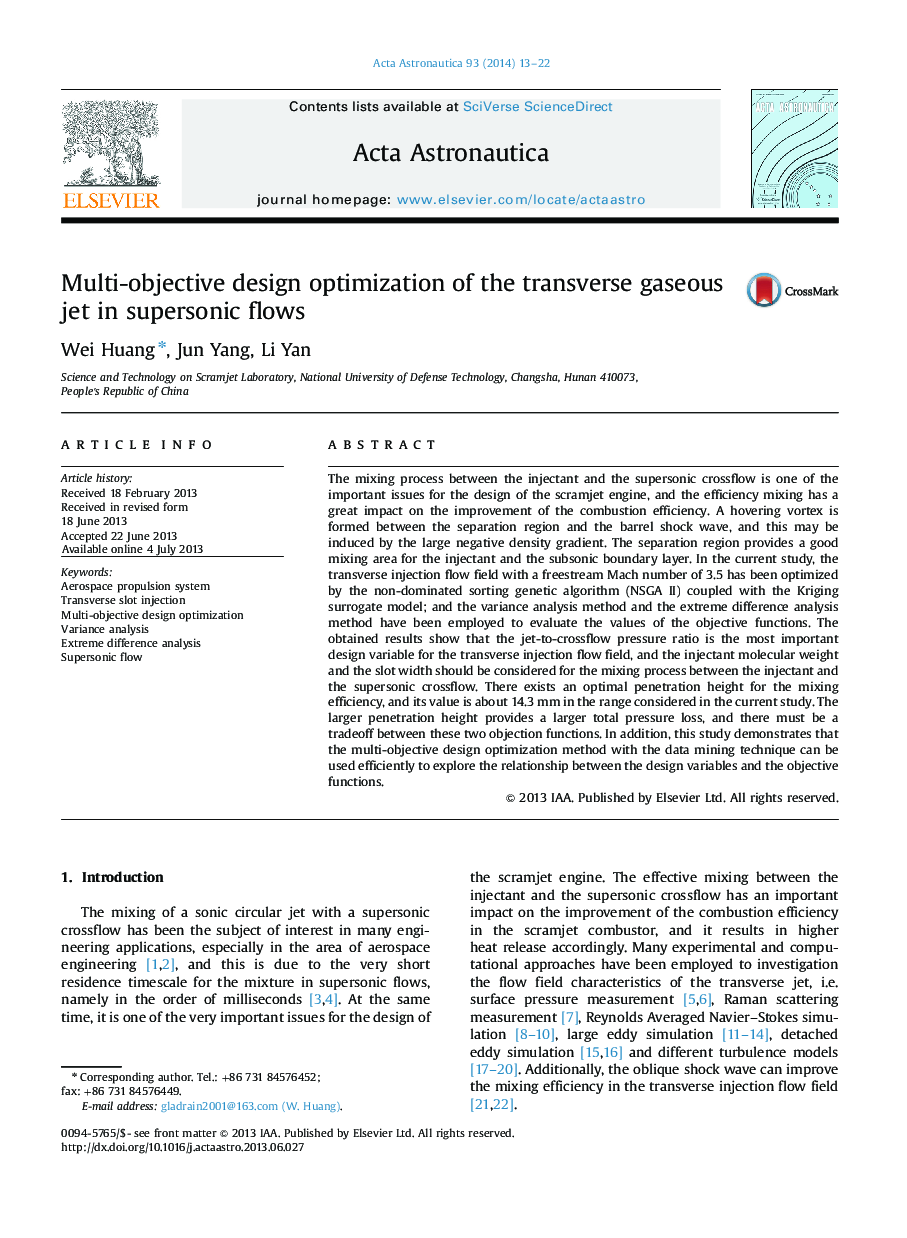| Article ID | Journal | Published Year | Pages | File Type |
|---|---|---|---|---|
| 1714859 | Acta Astronautica | 2014 | 10 Pages |
•The transverse gaseous jet in supersonic flows has been optimized.•The pressure ratio is the most important design variable for the transverse injection flow field.•There exists an optimal penetration height for the mixing efficiency.•The larger penetration height provides a larger total pressure loss.
The mixing process between the injectant and the supersonic crossflow is one of the important issues for the design of the scramjet engine, and the efficiency mixing has a great impact on the improvement of the combustion efficiency. A hovering vortex is formed between the separation region and the barrel shock wave, and this may be induced by the large negative density gradient. The separation region provides a good mixing area for the injectant and the subsonic boundary layer. In the current study, the transverse injection flow field with a freestream Mach number of 3.5 has been optimized by the non-dominated sorting genetic algorithm (NSGA II) coupled with the Kriging surrogate model; and the variance analysis method and the extreme difference analysis method have been employed to evaluate the values of the objective functions. The obtained results show that the jet-to-crossflow pressure ratio is the most important design variable for the transverse injection flow field, and the injectant molecular weight and the slot width should be considered for the mixing process between the injectant and the supersonic crossflow. There exists an optimal penetration height for the mixing efficiency, and its value is about 14.3 mm in the range considered in the current study. The larger penetration height provides a larger total pressure loss, and there must be a tradeoff between these two objection functions. In addition, this study demonstrates that the multi-objective design optimization method with the data mining technique can be used efficiently to explore the relationship between the design variables and the objective functions.
